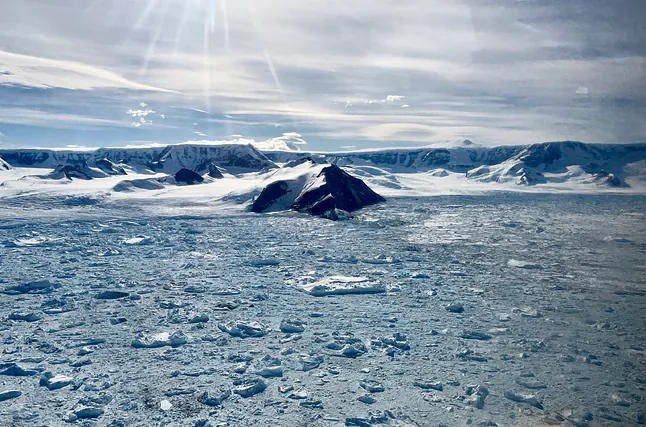A glacier on the eastern Antarctic peninsula has experienced the fastest retreat ever recorded in modern history: in just two months, almost 50% disintegrated.
A new study led by the University of Colorado Boulder, recently published in Nature Geoscience, details how and why the Hektoria Glacier in Antarctica retreated at an unprecedented rate in 2023, losing eight kilometers of ice in just two months. The main factor believed to have caused the disintegration was the glacier's rocky and flat bed, leading to an unusual iceberg calving.
The new findings could help researchers identify other glaciers that may require similar monitoring to detect rapid retreat in the future. The Hektoria Glacier is small by Antarctic standards—barely 296 square kilometers, approximately half the size of Madrid, in Spain,—but "similar rapid retreat in larger Antarctic glaciers could have catastrophic consequences for global sea level rise."
"When we flew over Hektoria in early 2024, I couldn't believe the vastness of the collapsed area," said Naomi Ochwat, lead author and researcher at the University of Colorado's Cooperative Institute for Research in Environmental Sciences (CIRES). "I had seen the fjord and the remarkable mountain formations in satellite images, but being there in person filled me with awe."
The research team, which included CIRES senior research scientist Ted Scambos, studied the area surrounding the Hektoria Glacier using satellites. They wanted to understand why the marine ice retreated so rapidly.
Many Antarctic glaciers are tidewater glaciers: glaciers that rest on the seafloor and whose ice front ends in the ocean, calving icebergs. The topography beneath these glaciers is often varied; they can sit on deep canyons, underground mountains, or large plains. In the case of Hektoria, the glacier rested on an ice plain, a flat area of bedrock below sea level. Previous research had found that, between 15,000 and 19,000 years ago, Antarctic glaciers with ice plains retreated hundreds of meters per day, which helped the team better understand Hektoria's rapid retreat.
When tidewater glaciers meet the ocean, they can float on the ocean surface instead of resting on solid ground. The point where a glacier floats is called the grounding line. By using various satellite data types, researchers discovered that Hektoria had multiple grounding lines, indicating the presence of the underlying ice plain, which caused a large part of the glacier to suddenly float, leading to its rapid calving. While floating, it was exposed to ocean forces that opened cracks from the glacier's base, which joined the cracks exposed on the surface, causing the entire glacier to calve.
The team used satellite data to study the glacier at different time intervals and created a comprehensive image of the glacier, its topography, and its retreat.
"If we only had an image every three months, perhaps we couldn't tell you that the glacier lost two and a half kilometers in two days," Ochwat said. "By combining images from these different satellites, we can fill in the missing information and confirm how quickly the glacier lost ice."
The researchers also used seismic instruments to identify a series of glacier earthquakes in Hektoria that occurred simultaneously with the rapid retreat period.
"Hektoria's retreat is striking; this kind of rapid retreat completely changes the possibilities for other larger glaciers on the continent," Scambos said. "If similar conditions occur in other areas, the sea level rise from the continent could be greatly accelerated."
